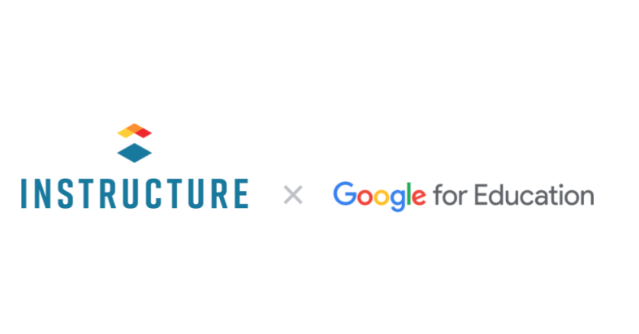
While the Every Student Succeeds Act (ESSA) is the law of the land, many conversations about ESSA and Title I funding still end with a tilt of the head, a shift of the eyes and an, “I understand, but can we do x, y, z?” There is increased flexibility on the allowable use of these funds, more than many district leaders may realize. In discussions with district partners, we discovered four key areas that warrant highlighting, dispelling some common misconceptions related to ESSA and evidence-based interventions.
1: Selecting “evidence-based interventions” does not require multi-year randomized control trials.
It’s a common misconception that “evidence-based” interventions, as outlined in ESSA guidance and Title I funding requirements, are too challenging to identify and implement. Needs assessments and ongoing implementation measurements are essential components of ESSA and Title I funding allocations. As stated in the Department of Education guidance on using evidence to strengthen education investments, “selecting evidence-based interventions that SEAs, LEAs, and schools have the capacity to implement (page 3)” is key. In reference to Title I specifically, funds require the use of “evidence-based” interventions that meet higher levels of evidence (page 7).
The levels of evidence outlined by ESSA are as follows:
-
Strong: Experimental studies with large sample and positive effect.
-
Moderate: Quasi-experimental studies with large sample and positive effect.
-
Promising: Correlational studies with statistical controls and valid sample.
-
Demonstration: Well-designed logic model with efforts to identify effect.
Note: Full research design elements and requirements are detailed in the ESSA guidance.
The core research designs facilitated by LearnPlatform by Instructures’s rapid-cycle evaluation engine generate the types of evidence that education organizations need to meet ESSA requirements.
2: You need a plan in place to measure and build upon your initial evidence-based interventions.
A significant portion of the Department of Education guidance on using evidence to strengthen education investments is in “examining and reflecting upon how the intervention is working (page 3).” Identifying interventions is only half of the equation – having a plan (or solution) in place to measure and follow up on implementation is important and strengthens federal funding requests.
Education organizations across the country use rapid-cycle evaluations to conduct ongoing measurements and evaluations of the implementation and subsequent effectiveness of school, district or state-wide solutions. These analyses help them understand:
-
The costs of edtech initiatives.
-
The extent to which edtech products are being used or implemented with fidelity.
-
The impact that edtech products are having on education outcomes.
Rapid-cycle evaluations are an increasingly valuable component of state funding plans as a timely, valid and reliable way to satisfy federal reporting requirements and ensure the funding is used for implementations that work and meet predetermined goals.
3: Title I funds can be used toward any school subject identified as in need of improvement.
This is a common misconception on what Title I funds can be used for due to the numerous interpretations of the wording in the “allowable use of funds” section of the usage guidance. Title I funds can be used toward any school subject identified as in need of improvement. These funds can even be used for school-wide technology or support solutions determined during needs assessment. Identifying what needs improvement and supporting it with definitive data is key. ESSA guidelines also place significant emphasis on identifying and finding solutions appropriate for various subgroups of students. IMPACT allows you to flexibly define subgroups of interest based on your needs and filter the results based on the respective categories. This provides more nuanced evidence on the effectiveness of educational interventions for given subsets of students based on factors such as demographic variables (e.g., gender, ethnicity), family income (e.g., free or reduced-price lunch status), prior achievement, or educational context (e.g., grade level, school type, urbanicity).
4: Title I funds do not only apply toward teaching training.
When ESSA rolled out, education organizations were afforded new flexibility in the way Title I funds could be used, allowing dollars to be more freely allocated. As stated in the Department of Education guidance on the use of funds for a provision of the ESSA, a Local Education Agency (LEA) can use funds, subject to the 15 percent special rule, to, “build technology capacity and infrastructure, which includes procuring and ensuring quality of content, and purchasing devices, equipment and software to increase readiness (page 35).”
The guidance further stipulates that funds can be used to support evidence gathering and analysis in order to support educational research and innovation. ESSA gives districts flexibility in their expenditures when they provide evidence that supports instructional technology decisions that are designed to raise the achievement of low-performing students. Organizations, including those applying for school improvement grants or using Title I funds, must demonstrate this evidence for funds eligibility at the four levels (strong, moderate, promising and demonstration) (see numbers 1 and 2).
Ultimately, the reports and dashboards generated through LearnPlatform’s research-driven framework for rapid-cycle evaluation help education organizations demonstrate and document evidence that:
-
Aligns with ESSA guidelines.
-
Assists in needs identification for selecting evidence-based interventions.
-
Facilitates easy rapid-cycle evaluations of the effectiveness of implementations.
All of this makes it easier for schools, districts and states of any size to make evidence-based, data-driven decisions that also comply with federal reporting requirements.
Get connected with a team member to learn about how LearnPlatform can be part of your ESSA fund planning.
Related Content
 canvas-offline-blog-thumbnail-2024.jpg
canvas-offline-blog-thumbnail-2024.jpgBlog Articles
 googlexinst.png
googlexinst.pngBlog Articles
 facommons.png
facommons.pngBlog Articles